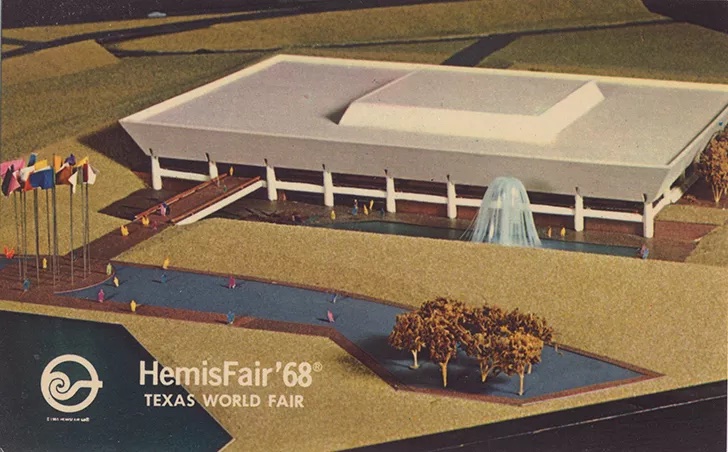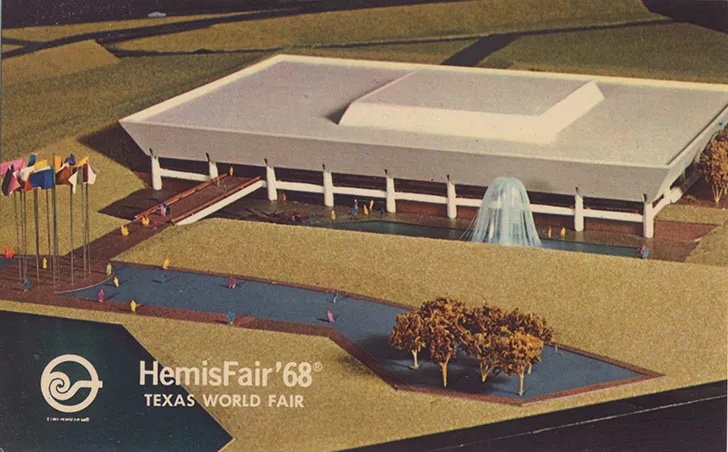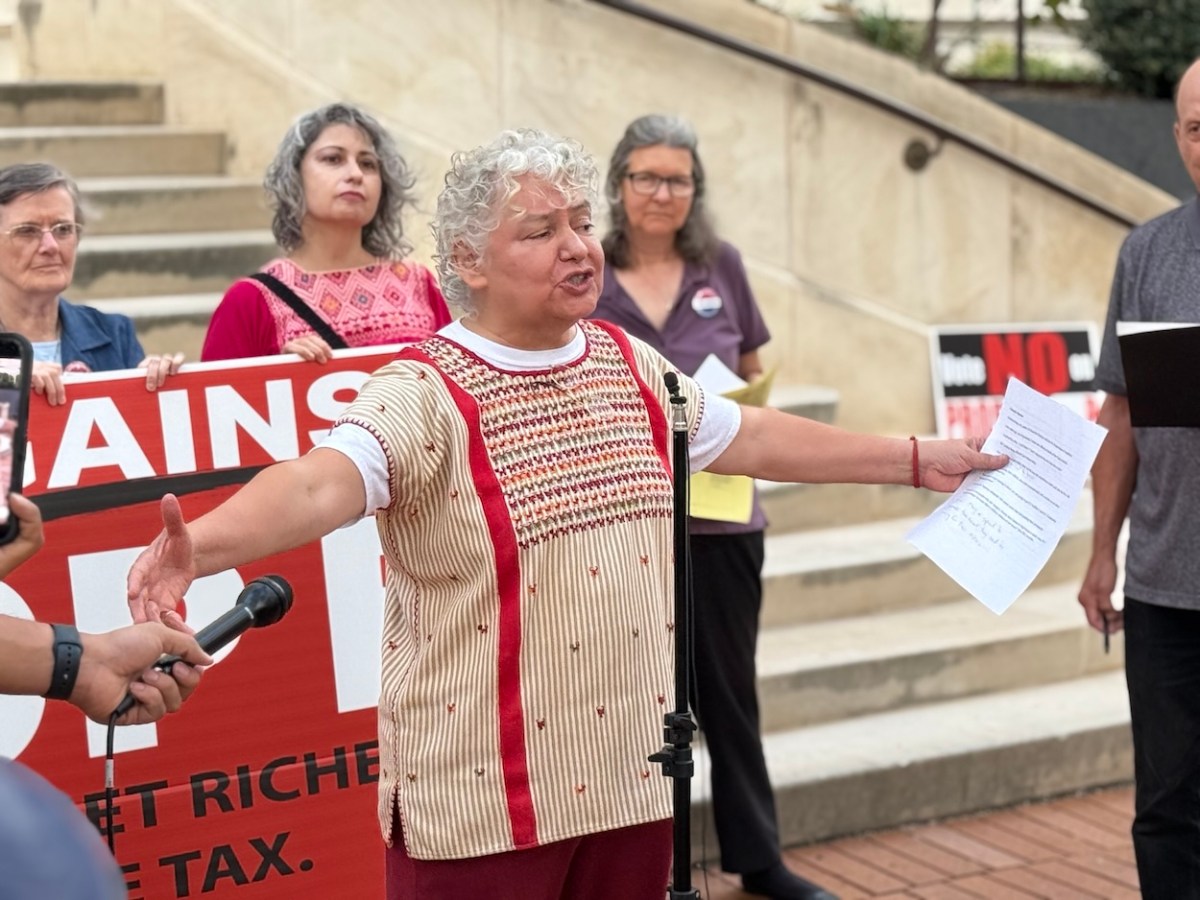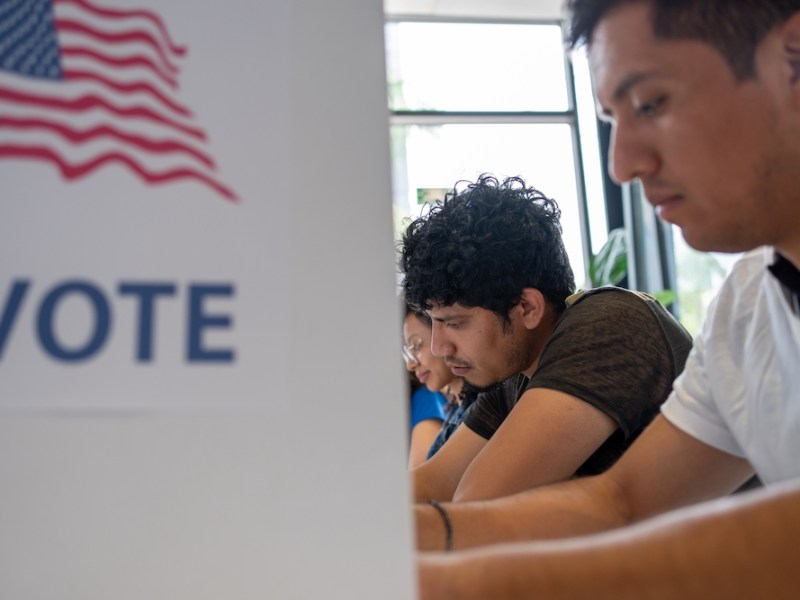 A postcard depicts a rendering of the now-demolished Institute of Texan Cultures building at Hemisfair. Credit: Courtesy Image / Hemisfair ’68
A postcard depicts a rendering of the now-demolished Institute of Texan Cultures building at Hemisfair. Credit: Courtesy Image / Hemisfair ’68
The following is an independently written guest commentary submitted to the Current.
The San Antonio Spurs want to move back to Hemisfair, but residents should consider the city’s history with the area before helping make that possible.
On Nov. 4, San Antonians will vote on propositions A and B. Proposition A will fund a year-round rodeo district near the Freeman Coliseum and Frost Bank Center. Proposition B will finance the construction of a new Spurs arena as part of the Project Marvel downtown sports-and-entertainment district.
If the propositions are approved, the Spurs will return to the historic fairgrounds of HemisFair ’68. Spurs fans got a glimpse of the team’s nostalgic roots playing at Hemisfair Arena with their 2024-2025 city edition jerseys, which featured the Tower of the Americas as its emblem.
The arena and tower served as the major attractions for the six-month world’s fair in 1968, meant to celebrate San Antonio’s 250th Anniversary. However, the Spurs did not move to the city until 1973. Still, it is through the arena and redevelopment of downtown that the Spurs truly share history with Hemisfair.
To understand this, it’s important to start with Germantown. The 92-acre downtown neighborhood was destroyed, displacing 1,300 residents to make room for Hemisfair, the convention center, and the River Walk extension.
Most of Hemisfair was federally funded through urban renewal, also known as slum clearance. Mayor Walter McAllister and Congressman Henry B. González were supporters of this program, which targeted at-risk neighborhoods for destruction in the name of progress.
Hemisfair officials told the San Antonio City Council in 1963 that it would “not cost the city of San Antonio a thin dime.” At the time, the Urban Renewal Agency had already sponsored a significant portion, and fair underwriters raised $6 million for its construction. However, in 1964, the city council approved a $30 million bond (about $315 million today) to build the convention center next to Hemisfair.
Opposition emerged from civil rights groups protesting the unfair tax burden and from preservationists opposing the destruction of the neighborhood.
On opening day in 1968, Chicano activists protested outside its gates, holding signs that read “Hemisfair is for the Rich Only.” Hemisfair executives included some of the wealthiest and most influential figures in San Antonio, such as Red McCombs and H.B. Zachry.
When the doors closed on Hemisfair, the city worried about what to do with the space. The event drew fewer attendees than expected, while the city struggled with its growing debt. In 1988, the San Antonio Light reported that Hemisfair’s construction cost a total of $490 million (about $4.6 billion today).
Downtown redevelopment near Hemisfair continued to grow over the decades. By 1993, the Spurs left Hemisfair Arena for the Alamodome, which cost $186 million. The surrounding area of St. Paul’s Square and Sunset Station were renovated into commercial spaces to make way for fan traffic.
The Spurs only used half of the stadium, which was originally built to house football teams. I remember sitting with my sister, facing the giant curtain in the arena. I saw the Spurs Coyote practicing halftime show antics on one side and the Spurs playing on the other.
In 2002, the Spurs relocated even further into the East Side to what is now the Frost Bank Center, which cost $193 million.
Today, the tower remains a symbol of San Antonio, but memories of Hemisfair’s destructive yet debt-ridden past have faded. On Nov. 4, the city will once again turn to the inner city for solutions to its struggling economy.
The propositions will determine whether the public will fund Project Marvel, just as it did with Hemisfair and other venues. Residents should consider the historical impact these spaces have had on the city over the years.
Gene Morales is an assistant professor of history at El Paso Community College and a San Antonio native with a forthcoming book about HemisFair ’68.
If you’re interested in submitting a guest commentary to the San Antonio Current, please reach out to snowlin@sacurrent.com.
Subscribe to SA Current newsletters.
Follow us: Apple News | Google News | NewsBreak | Reddit | Instagram | Facebook | Twitter | Or sign up for our RSS Feed
Rel\ated Stories
UNITE HERE Local 23 officials question whether the new jobs will pay a living wage.
The complaint accuses four council members of staging pro-Marvel rallies that were billed as educational ‘town halls.’
That’s an 8% decline compared to the first day of early voting in the June mayoral runoff between Gina Ortiz Jones and Rolando Pablos.


